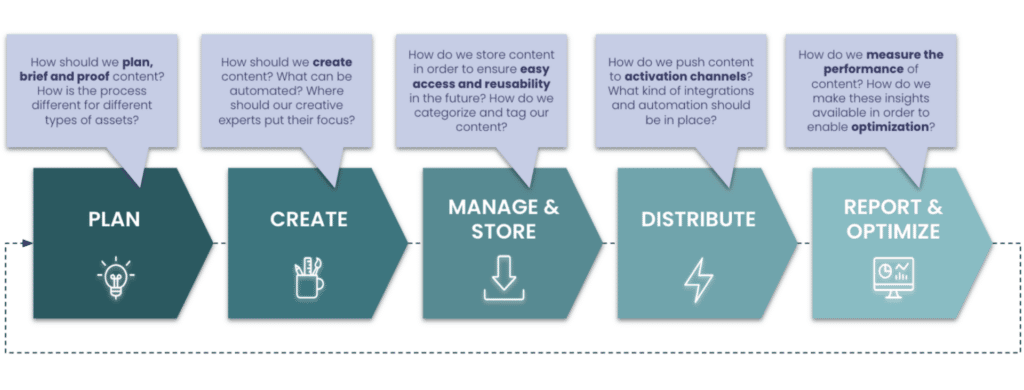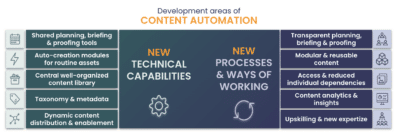The recent shift towards increased customer-centricity and efficiency has put personalization at the forefront of the marketing and sales executive agenda. Consumers are now demanding personalized experiences and interactions, with 71% expecting companies to deliver (1). To meet these demands, personalization projects are being developed across industries. However, they often fall short when it comes to delivering personalized interactions at scale. This is where Content Automation comes in, unlocking personalization at scale in an efficient manner.
As companies progress closer towards personalization, they experience an exponential increase in the amount of content needed, which can put a strain on content teams. With growing demands for efficiency, content teams cannot simply be scaled up, but must instead rethink the way they work with content end-to-end. Content Automation can help future-proof content operations for the age of personalization and automation, while also unlocking efficiencies that allow creatives to work smarter, not harder.
Content Automation involves the entire content lifecycle from planning to optimization, and requires a combination of new technical capabilities and processes. It is not just about auto-generating content, but improving the efficiency of the entire content process. Content Automation requires the introduction of new tools and processes, from planning and creation to distribution.

One DAM to rule them all
If you are a J. R. R. Tolkien fan, the reference above may already give away part of what this blog is about. If you are not, bear with us and you will understand why. We have previously covered the needs of improving both technical capabilities and processes in order to reach personalization, which you can read here.

But, one of the key enablers to reach that is a Digital Asset Management (DAM) tool. A DAM is a software platform designed to store, organize, and manage digital files. The purpose of a DAM is to provide a central repository for assets, making it easier for organizations to find, access, and share them. A DAM typically includes features like file metadata management, content creation workflows, usage rights and consent management, as well as user-level permissions. This helps organizations maintain control over their digital assets and ensure that they are used in an appropriate and consistent manner.
Now we have covered the why of DAMs. If you are interested in the what and how of it, download the article in its entirety below. There we cover not only different features, but also challenges and opportunities to improve – both things to keep in mind before implementing a DAM, as well as things to consider if you already have one in place.